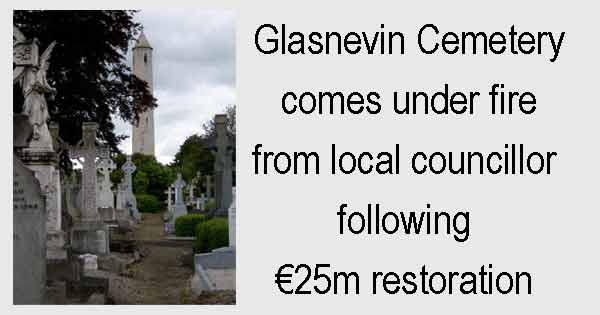One of Dublin’s most famous landmarks has come in for criticism because of the language that is used in the signposts and information points.
The signs in Glasnevin Cemetery and Museum are only written in English following a 10 year, and €25m, restoration of the site.
Glasnevin is one of Ireland’s major tourist attractions and is the final resting place of some of the most influential people in Irish history such as Daniel O’Connell, Michael Collins, Éamon de Valera, Constance Markievicz, Jeremiah O’Donovan Rossa, Maude Gonne, Roger Casement, Kevin Barry and many others.

It is also where many significant people from Irish culture are buried such as Luke Kelly, Brendan Behan and Christy Brown.
Independent councillor Nial Ring is concerned that the Irish language is not used in tandem with English in the public signs. He has forwarded a motion to the Central Area Committee asking the city manager to write to Glasnevin Trust.
He said: “I want him to request that due recognition be given to the Irish language in signage, posters, and leaflets throughout the complex, in recognition of the historical importance of Glasnevin Cemetery in Irish culture, history and heritage.
“Glasnevin is an amazing place full of history and heritage and the people there have to be commended for the massive amount of work they have done over recent years to turn it into the facility it is today, but I was gobsmacked by the lack of Irish in the signs and posters when I was up there recently.”
The cemetery is not formally required to use Irish language on their signs. However, a spokesman for Glasnevin they were considering implementing the Irish language in the coming months.
The spokesman said: “Glasnevin Cemetery Museum has a wide range of activities for Irish speakers that include special tours of the cemetery through Irish upon request and regular tours for Gaelscoil students.
“We also run tours and activities in Irish every year in celebration and recognition of Seachtain na Gaeilge.”
Find out more about Glasnevin Cemetery.